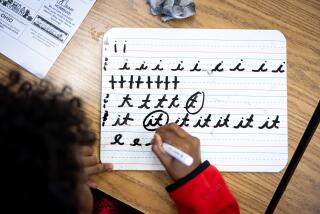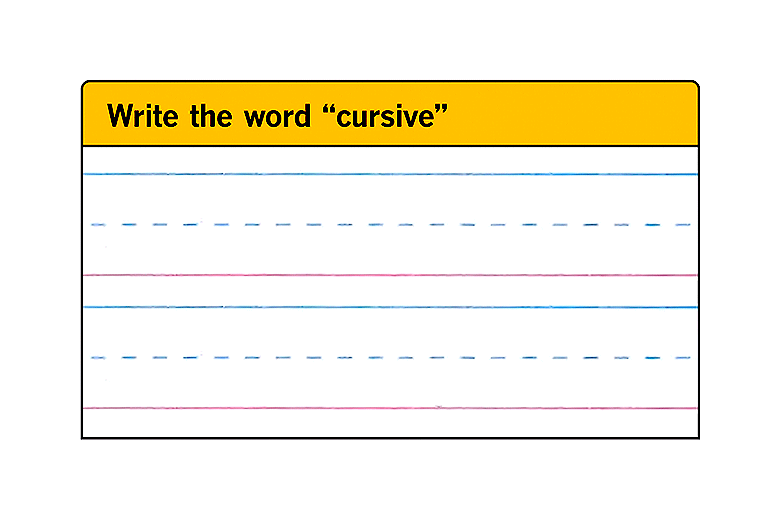AROUND HOME : Calligraphy
- Share via
FOR CENTURIES, a mark of intelligence (or at least education) has been writing and its corollary, reading. Letters are the first thing we learn to write, and we strain to get the shapes and proportions just right. Most of us quickly abandon laborious techniques, if we ever really learn them, and our writing becomes a messy scrawl. This may help explain why calligraphy is so popular now; it treats letters and writing as a precise, legible, handsome craft. Calligraphy is more than communication; it is writing as art.
Learning calligraphy is every bit as stressful and rewarding as learning to make those big A ‘s and little a ‘s in first grade: Sit up straight, hold the pen at a precise angle, grip it firmly but comfortably, get the proper proportions. Squirm over the squiggles; labor over the flourishes. But when it’s right, it’s beautiful. Judging from the number of calligraphers listed in the Yellow Pages, it may also be profitable.
Italic and roman are probably the styles most often associated with calligraphy, but there are hundreds of other styles, including Arabic-looking swoops and Oriental-like strokes--even one’s own individual twists. For inspiration, find the book “Calligraphic Alphabets,” by Arthur Baker; there is no text, no instruction, just page after page of fabulous alphabets. Calligraphy classes are offered by Everywoman’s Village in Van Nuys, the Learning Tree in Chatsworth, Piecemakers in Costa Mesa and the Torrance Unified School District Adult Education department. Many Aaron Bros. stores throughout Southern California carry books and calligraphy supplies. The stationery company Sheaffer Eaton markets several beginner’s calligraphy kits that include a pen with nibs and ink cartridges and other accessories; prices range from $3.50 to $11.95 ; the kits are stocked in stationery stores and departments.
For instruction, Marie Angel’s “The Art of Calligraphy” is a durable standard. “Calligraphy and the Art of Decorative Lettering,” by Al Mack, and “Calligraphy and Lettering Design,” by Eugene Metcalf, are widely available .
More to Read
Sign up for our Book Club newsletter
Get the latest news, events and more from the Los Angeles Times Book Club, and help us get L.A. reading and talking.
You may occasionally receive promotional content from the Los Angeles Times.










